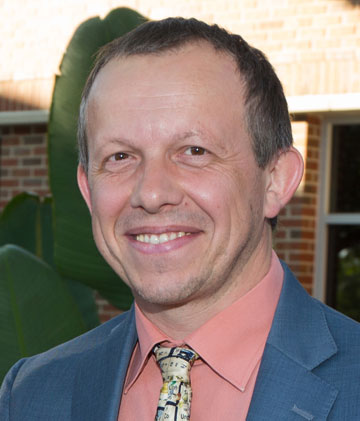News & Events
MSC03 2060
300 Terrace St. NE
Albuquerque, NM 87131-0001
Physical Location:
Clark Hall
Phone: 505-277-6655
chemistry@unm.edu
MSC03 2060
300 Terrace St. NE
Albuquerque, NM 87131-0001
Physical Location:
Clark Hall
Phone: 505-277-6655
chemistry@unm.edu

Profile: Dr. Shatruk received a B.S. and a M.S. from Moscow State University in 1996. He received his Ph.D. from Moscow State University in 2000. He was a Post-Doctoral Fellow at Cornell University from 2001 to 2003 and at Texas A&M University from 2003 to 2007. Dr. Shatruk works in a broadly defined area of advanced functional materials. His current, more specific research interests include photo-switchable molecular materials, intermetallic magnets for magnetic refrigeration and electric vehicles, and low-dimensional magnetic materials such as spin-frustrated 2D magnets and nanomagnets. The disciplinary focus of his work lies within inorganic materials chemistry, with strong interdisciplinary crossover to physical and organic chemistry, as well as to condensed matter physics and machine learning. The students and postdocs obtain diverse training in inorganic and organic syntheses, X-ray and neutron scattering methods, magnetic and electrical property measurements, optical, infrared, NMR, and EPR spectroscopy, as well as computational approaches to elucidation and discovery of new functional materials. (website)
Abstract: The use of light to control magnetism at the molecular level is appealing for the development of molecule-based sensors and memory devices. After discussing some fundamental structure-property relationships in spin-crossover transition metal complexes,1 I will highlight our work on the design and synthesis of hybrid materials that combine spin-state switching with electrical conductivity.2 In the second part of this lecture, I will discuss light-induced magnetic switching, especially the comparison of photomagnetic effects in transition metal complexes and organic materials.3 Finally, I will present a new mechanism for magnetic bistability in organic systems, which relies on unique behavior of small organic molecules in their crystalline state.
|
|
|
Check out some articles: A Simple Approach for Predicting the Spin State of Homoleptic Fe(II) Tris-diimine Complexes (Journal of the American Chemical Society, 2017) and Photomagnetic Response in Highly Conductive Iron(II) Spin-Crossover Complexes with TCNQ Radicals (Angewandte Chemie, 2015)
See Announcement